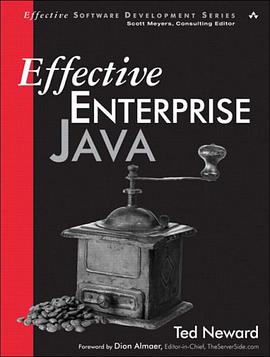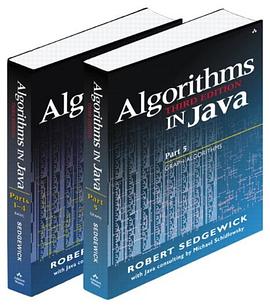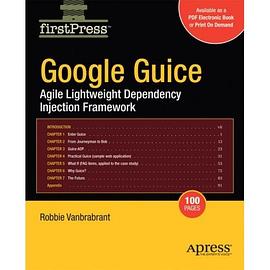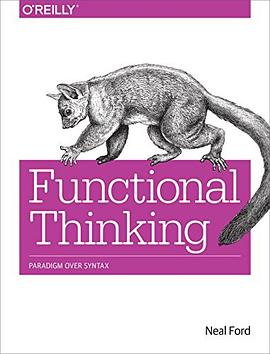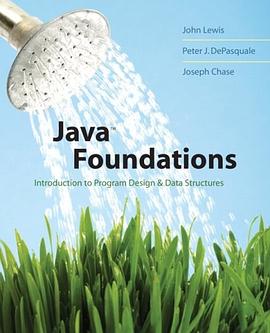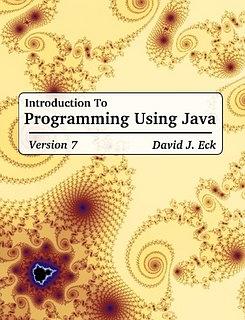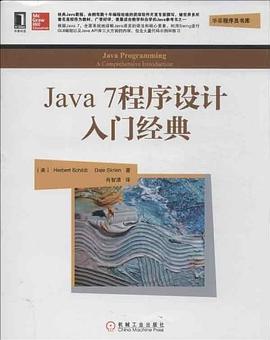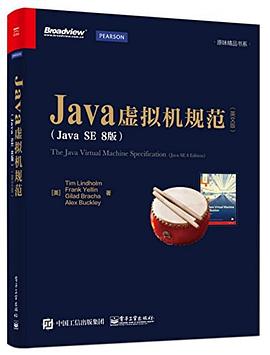

具体描述
《Java虚拟机规范(Java SE 8版)英文版》由Java虚拟机技术创建人撰写。《Java虚拟机规范(Java SE 8版)英文版》全面而准确地阐释了Java虚拟机各方面的细节,围绕Java虚拟机整体架构、编译器、class文件格式、加载、链接与初始化、指令集等核心主题对Java虚拟机进行全面而深入的分析,深刻揭示Java虚拟机的工作原理。《Java虚拟机规范(Java SE 8版)英文版》中完整地讲述了由Java SE 8所引入的新特性,例如对包含默认实现代码的接口方法所做的调用,以及为支持类型注解及方法参数注解而对class文件格式所做的扩展等,还阐明了class文件中各属性的含义及字节码验证的规则。
《Java虚拟机规范(Java SE 8版)英文版》基于Java SE 8,完整且准确地阐述Java虚拟机规范,是深度了解Java虚拟机和Java语言实现细节的极佳选择。
作者简介
Tim Lindholm曾是Sun公司杰出工程师。他Java虚拟机高级架构师,Java编程语言的主要贡献者之一,目前主要负责移动设备上的Java应用。在到Sun公司工作之前,他曾经在美国阿贡国家实验室和Quintus公司从事与虚拟机和运行时系统相关的工作。他拥有卡尔顿学院数学学士学位。
Frank Yellin曾是Sun公司高级工程师。他是Java项目元老级成员。近十余年中,他都从事着解释型及编译型语言的运行时系统方面的工作。在到Sun公司工作之前,他在Lucid公司从事Common Lisp编译器相关的工作。他拥有哈佛大学应用数学学士学位及斯坦福大学计算机科学硕士学位。
Gilad Bracha是Newspeak编程语言的创建者,曾是Sun公司杰出工程师。在到Sun公司工作之前,他在Animorphic Smalltalk System公司从事Strongtalk语言相关的工作。他拥有犹他大学计算机科学博士学位。
Alex Buckley是Oracle公司Java编程语言和Java虚拟机规范负责人。他拥有伦敦帝国学院计算机技术博士学位。
目录信息
前言
1 Introduction
1.1 A Bit of History
1.2 The Java Virtual Machine
1.3 Organization of the Specification
1.4 Notation
1.5 Feedback
2 The Structure of the Java Virtual Machine
2.1 The class File Format
2.2 Data Types
2.3 Primitive Types and Values
2.3.1 Integral Types and Values
2.3.2 Floating-Point Types, Value Sets, and Values
2.3.3 The returnAddress Type and Values
2.3.4 The boolean Type
2.4 Reference Types and Values
2.5 Run-Time Data Areas
2.5.1 The pc Register
2.5.2 Java Virtual Machine Stacks
2.5.3 Heap
2.5.4 Method Area
2.5.5 Run-Time Constant Pool
2.5.6 Native Method Stacks
2.6 Frames
2.6.1 Local Variables
2.6.2 Operand Stacks
2.6.3 Dynamic Linking
2.6.4 Normal Method Invocation Completion
2.6.5 Abrupt Method Invocation Completion
2.7 Representation of Objects
2.8 Floating-Point Arithmetic
2.8.1 Java Virtual Machine Floating-Point Arithmetic and IEEE 754
2.8.2 Floating-Point Modes
2.8.3 Value Set Conversion
2.9 Special Methods
2.10 Exceptions
2.11 Instruction Set Summary
2.11.1 Types and the Java Virtual Machine
2.11.2 Load and Store Instructions
2.11.3 Arithmetic Instructions
2.11.4 Type Conversion Instructions
2.11.5 Object Creation and Manipulation
2.11.6 Operand Stack Management Instructions
2.11.7 Control Transfer Instructions
2.11.8 Method Invocation and Return Instructions
2.11.9 Throwing Exceptions
2.11.10 Synchronization
2.12 Class Libraries
2.13 Public Design, Private Implementation
3 Compiling for the Java Virtual Machine
3.1 Format of Examples
3.2 Use of Constants, Local Variables, and Control Constructs
3.3 Arithmetic
3.4 Accessing the Run-Time Constant Pool
3.5 More Control Examples
3.6 Receiving Arguments
3.7 Invoking Methods
3.8 Working with Class Instances
3.9 Arrays
3.10 Compiling Switches
3.11 Operations on the Operand Stack
3.12 Throwing and Handling Exceptions
3.13 Compiling finally
3.14 Synchronization
3.15 Annotations
4 The class File Format
4.1 The ClassFile Structure
4.2 The Internal Form of Names
4.2.1 Binary Class and Interface Names
4.2.2 Unqualified Names
4.3 Descriptors
4.3.1 Grammar Notation
4.3.2 Field Descriptors
4.3.3 Method Descriptors
4.4 The Constant Pool
4.4.1 The CONSTANT_Class_info Structure
4.4.2 The CONSTANT_Fieldref_info, CONSTANT_Methodref_info, and CONSTANT_InterfaceMethodref_info Structures
4.4.3 The CONSTANT_String_info Structure
4.4.4 The CONSTANT_Integer_info and CONSTANT_Float_info Structures
4.4.5 The CONSTANT_Long_info and CONSTANT_Double_info Structures
4.4.6 The CONSTANT_NameAndType_info Structure
4.4.7 The CONSTANT_Utf8_info Structure
4.4.8 The CONSTANT_MethodHandle_info Structure
4.4.9 The CONSTANT_MethodType_info Structure
4.4.10 The CONSTANT_InvokeDynamic_info Structure
4.5 Fields
4.6 Methods
4.7 Attributes
4.7.1 Defining and Naming New Attributes
4.7.2 The ConstantValue Attribute
4.7.3 The Code Attribute
4.7.4 The StackMapTable Attribute
4.7.5 The Exceptions Attribute
4.7.6 The InnerClasses Attribute
4.7.7 The EnclosingMethod Attribute
4.7.8 The Synthetic Attribute
4.7.9 The Signature Attribute
4.7.9.1 Signatures
4.7.10 The SourceFile Attribute
4.7.11 The SourceDebugExtension Attribute
4.7.12 The LineNumberTable Attribute
4.7.13 The LocalVariableTable Attribute
4.7.14 The LocalVariableTypeTable Attribute
4.7.15 The Deprecated Attribute
4.7.16 The RuntimeVisibleAnnotations Attribute
4.7.16.1 The element_value structure
4.7.17 The RuntimeInvisibleAnnotations Attribute
4.7.18 The RuntimeVisibleParameterAnnotations Attribute
4.7.19 The RuntimeInvisibleParameterAnnotations Attribute
4.7.20 The RuntimeVisibleTypeAnnotations Attribute
4.7.20.1 The target_info union
4.7.20.2 The type_path structure
4.7.21 The RuntimeInvisibleTypeAnnotations Attribute
4.7.22 The AnnotationDefault Attribute
4.7.23 The BootstrapMethods Attribute
4.7.24 The MethodParameters Attribute
4.8 Format Checking
4.9 Constraints on Java Virtual Machine Code
4.9.1 Static Constraints
4.9.2 Structural Constraints
4.10 Verification of class Files
4.10.1 Verification by Type Checking
4.10.1.1 Accessors for Java Virtual Machine Artifacts
4.10.1.2 Verification Type System
4.10.1.3 Instruction Representation
4.10.1.4 Stack Map Frame Representation
4.10.1.5 Type Checking Abstract and Native Methods
4.10.1.6 Type Checking Methods with Code
4.10.1.7 Type Checking Load and Store Instructions
4.10.1.8 Type Checking for protected Members
4.10.1.9 Type Checking Instructions
4.10.2 Verification by Type Inference
4.10.2.1 The Process of Verification by Type Inference
4.10.2.2 The Bytecode Verifier
4.10.2.3 Values of Types long and double
4.10.2.4 Instance Initialization Methods and Newly Created Objects
4.10.2.5 Exceptions and finally
4.11 Limitations of the Java Virtual Machine
5 Loading, Linking, and Initializing
5.1 The Run-Time Constant Pool
5.2 Java Virtual Machine Startup
5.3 Creation and Loading
5.3.1 Loading Using the Bootstrap Class Loader
5.3.2 Loading Using a User-defined Class Loader
5.3.3 Creating Array Classes
5.3.4 Loading Constraints
5.3.5 Deriving a Class from a class File Representation
5.4 Linking
5.4.1 Verification
5.4.2 Preparation
5.4.3 Resolution
5.4.3.1 Class and Interface Resolution
5.4.3.2 Field Resolution
5.4.3.3 Method Resolution
5.4.3.4 Interface Method Resolution
5.4.3.5 Method Type and Method Handle Resolution
5.4.3.6 Call Site Specifier Resolution
5.4.4 Access Control
5.4.5 Overriding
5.5 Initialization
5.6 Binding Native Method Implementations
5.7 Java Virtual Machine Exit
6 The Java Virtual Machine Instruction Set
6.1 Assumptions: The Meaning of "Must"
6.2 Reserved Opcodes
6.3 Virtual Machine Errors
6.4 Format of Instruction Descriptions
mnemonic
6.5 Instructions
aaload
aastore
aconst_null
aload
aload_<n>
anewarray
areturn
arraylength
astore
astore_<n>
athrow
baload
bastore
bipush
caload
castore
checkcast
d2f
d2i
d2l
dadd
daload
dastore
dcmp<op>
dconst_<d>
ddiv
dload
dload_<n>
dmul
dneg
drem
dreturn
dstore
dstore_<n>
dsub
dup
dup_x1
dup_x2
dup2
dup2_x1
dup2_x2
f2d
f2i
f2l
fadd
faload
fastore
fcmp<op>
fconst_<f>
fdiv
fload
fload_<n>
fmul
fneg
frem
freturn
fstore
fstore_<n>
fsub
getfield
getstatic
goto
goto_w
i2b
i2c
i2d
i2f
i2l
i2s
iadd
iaload
iand
iastore
iconst_<i>
idiv
if_acmp<cond>
if_icmp<cond>
if<cond>
ifnonnull
ifnull
iinc
iload
iload_<n>
imul
ineg
instanceof
invokedynamic
invokeinterface
invokespecial
invokestatic
invokevirtual
ior
irem
ireturn
ishl
ishr
istore
istore_<n>
isub
iushr
ixor
jsr
jsr_w
l2d
l2f
l2i
ladd
laload
land
lastore
lcmp
lconst_<l>
ldc
ldc_w
ldc2_w
ldiv
lload
lload_<n>
lmul
lneg
lookupswitch
lor
lrem
lreturn
lshl
lshr
lstore
lstore_<n>
lsub
lushr
lxor
monitorenter
monitorexit
multianewarray
new
newarray
nop
pop
pop2
putfield
putstatic
ret
return
saload
sastore
sipush
swap
tableswitch
wide
7 Opcode Mnemonics by Opcode
Index
A Limited License Grant
· · · · · · (收起)
读后感
1. 边敲边实践,本人用的sublime编辑器再加上javap插件,屏幕开两栏,左边java代码,右边bytecode,对照着看挺好 2.在线文档,可结合着看,地址: http://www.weblearn.hs-bremen.de/risse/RST/docs/JavaVM/vmspec.pdf 3. 以前看过《自制编程语言》其中有门语言就类似java,作...
评分1. 边敲边实践,本人用的sublime编辑器再加上javap插件,屏幕开两栏,左边java代码,右边bytecode,对照着看挺好 2.在线文档,可结合着看,地址: http://www.weblearn.hs-bremen.de/risse/RST/docs/JavaVM/vmspec.pdf 3. 以前看过《自制编程语言》其中有门语言就类似java,作...
评分sun的vmspec是免费的在线的,看起来却很轻松,非常适合想了解vm底层的java程序员,看完之后对bytecode应该能看懂了
评分规范性的东西,不同的JVM厂商有不同的JVM实现。很多东西,JVM规范并没有强制要求,具体还是要看JVM实现。这本书写的还是不错,但是不容忽视的一点是,看着看着,你一定会睡着。你真的会睡着的。 这本书的封面不错,看起来比较有感觉。
评分规范性的东西,不同的JVM厂商有不同的JVM实现。很多东西,JVM规范并没有强制要求,具体还是要看JVM实现。这本书写的还是不错,但是不容忽视的一点是,看着看着,你一定会睡着。你真的会睡着的。 这本书的封面不错,看起来比较有感觉。
用户评价
粗略带过第四章指令集,可以在需要的时候查阅即可,前三章内容非常棒,JVM类加载内容表述过于抽象
评分粗略带过第四章指令集,可以在需要的时候查阅即可,前三章内容非常棒,JVM类加载内容表述过于抽象
评分粗略带过第四章指令集,可以在需要的时候查阅即可,前三章内容非常棒,JVM类加载内容表述过于抽象
评分粗略带过第四章指令集,可以在需要的时候查阅即可,前三章内容非常棒,JVM类加载内容表述过于抽象
评分粗略带过第四章指令集,可以在需要的时候查阅即可,前三章内容非常棒,JVM类加载内容表述过于抽象
相关图书
本站所有内容均为互联网搜索引擎提供的公开搜索信息,本站不存储任何数据与内容,任何内容与数据均与本站无关,如有需要请联系相关搜索引擎包括但不限于百度,google,bing,sogou 等
© 2025 book.quotespace.org All Rights Reserved. 小美书屋 版权所有



